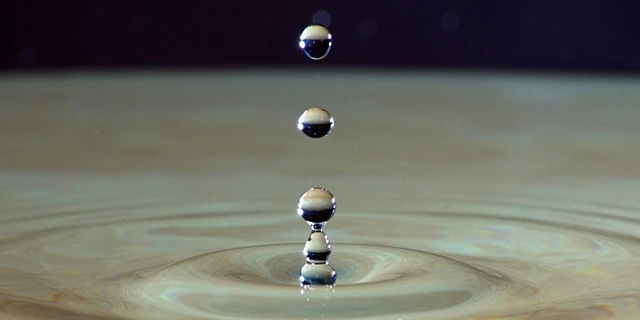Quit Ignoring That Annoying Drip, Drip, Drip
As the holiday season fast approaches, you’ve got a lot on your mind – family gatherings, food, gifts – there’s no way you’re paying much attention to that leaky faucet in your guest bathroom. After all, no one really uses that sink, right? Neighborly challenges you to bump up those leaky faucets on your “to-do” list!

That “drip…drip…drip…” isn’t just annoying – it’s the sound of money trickling down the drain! According to the Alliance for Water Efficiency, the typical home loses 2,000 to 20,000 gallons of water each year due to leaks. Other studies have shown the average leaky toilet wastes around 200 gallons per day. A typical leaky faucet leaking 10 “drips” per minute wastes three liters per day.
Neighborly wants to help you to save both water and money this season. Check out these common drip locations and the basics on how to fix a leaky faucet.
Common Culprits
Where are the most common “drip” locations in your home? Be mindful of your faucets, toilets, washing machine, refrigerator, dishwasher, shower, whole-house humidifiers, and evaporative coolers. Do a walk-around your home every so often to ensure that these appliances aren’t leaking. If you see a puddle, it may be time to call a plumber!
Fix a Leaky Faucet
Convinced it’s time to take care of that leaky faucet in the guest bathroom? Explore these general guidelines to fix it yourself.
- The very first step is to turn off the valve supplying water to your faucet. Open your faucet to ensure that all water is cleared from the faucet before continuing.
- Once you’ve released all water from your faucet, plug your drain by laying down a rag or inserting a drain plug. The last thing you want is to lose a small part down the drain!
- Determine your faucet type. The following guidelines apply to all kinds of faucets, but protocol will vary slightly depending on whether your faucet is compression (two handles), ball, cartridge, or ceramic disk. Be sure to further research your faucet type before taking your faucet apart.
- As you take apart your faucet, it’s crucial to establish some way to remember the order you removed the parts. One way to do this is to set parts aside in the order you removed them. It might be easiest to take photos as you go along. Don’t rely on your memory on this one! Make it easier on yourself and document as you go.
- Once you’ve taken apart your faucet, take a moment to look around. Check for deteriorated gaskets and mineral deposits. You can loosen mineral deposits with vinegar. Use a damp cloth to clean. You may also need to use a tool (a screwdriver works well) to clean the holes in the body of your faucet.
- When shopping for replacement parts, take your old parts with you! Sometimes you’ll find repair kits that are ready-to-go, but other times you’ll need to special order parts. It’s always safest to bring your parts along to ensure you purchase exactly what you need.
Have a question about any of the leaks in your home? Uncomfortable fixing this leak on your own? We know some professionals who are ready to help! Give Mr. Rooter Plumbing, a Neighborly family brand, a call for all your plumbing needs today.
Need another kind of service professional? Explore our entire family of brands on our homepage.



 Back
Back

 1 (855) 217-8437
1 (855) 217-8437


